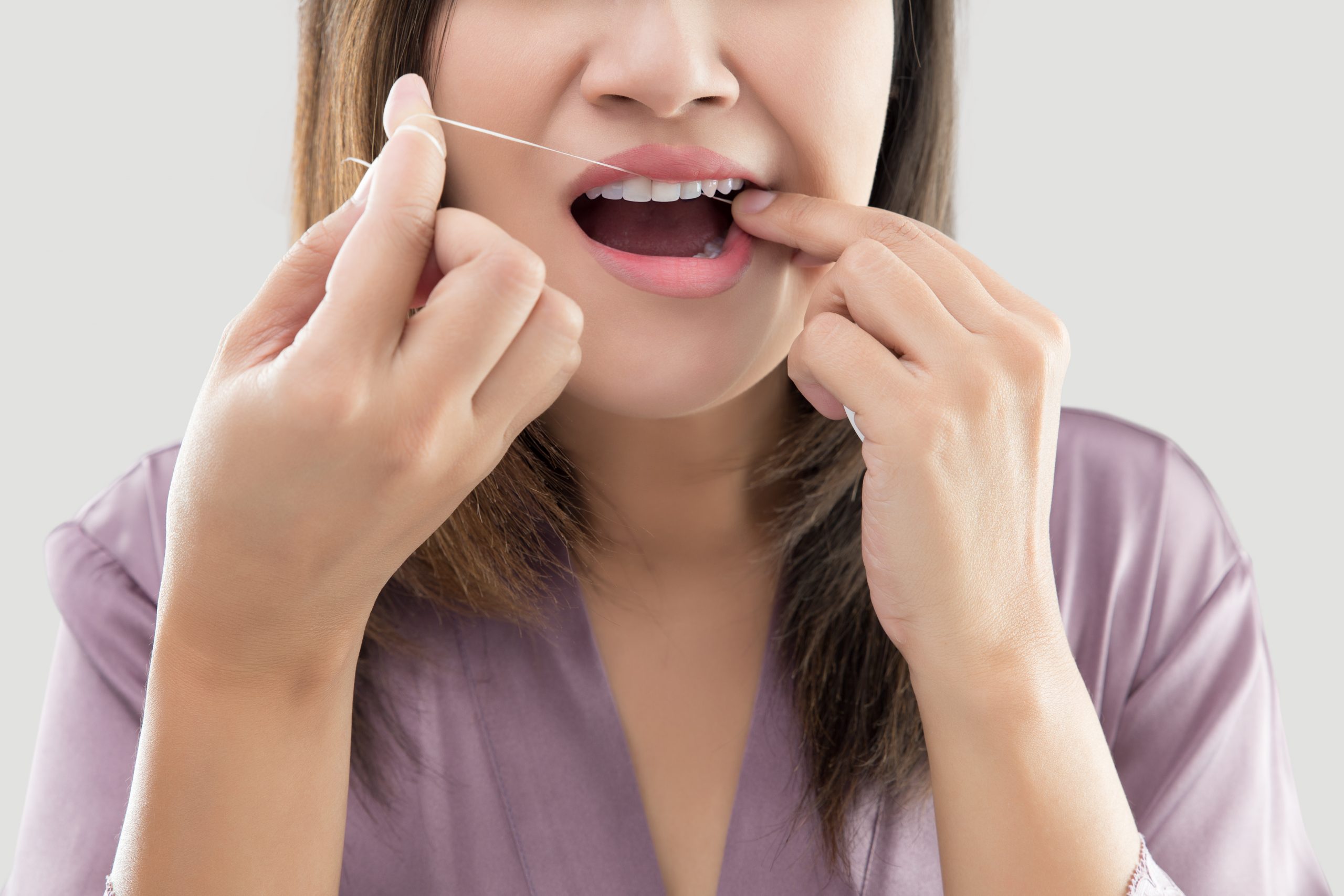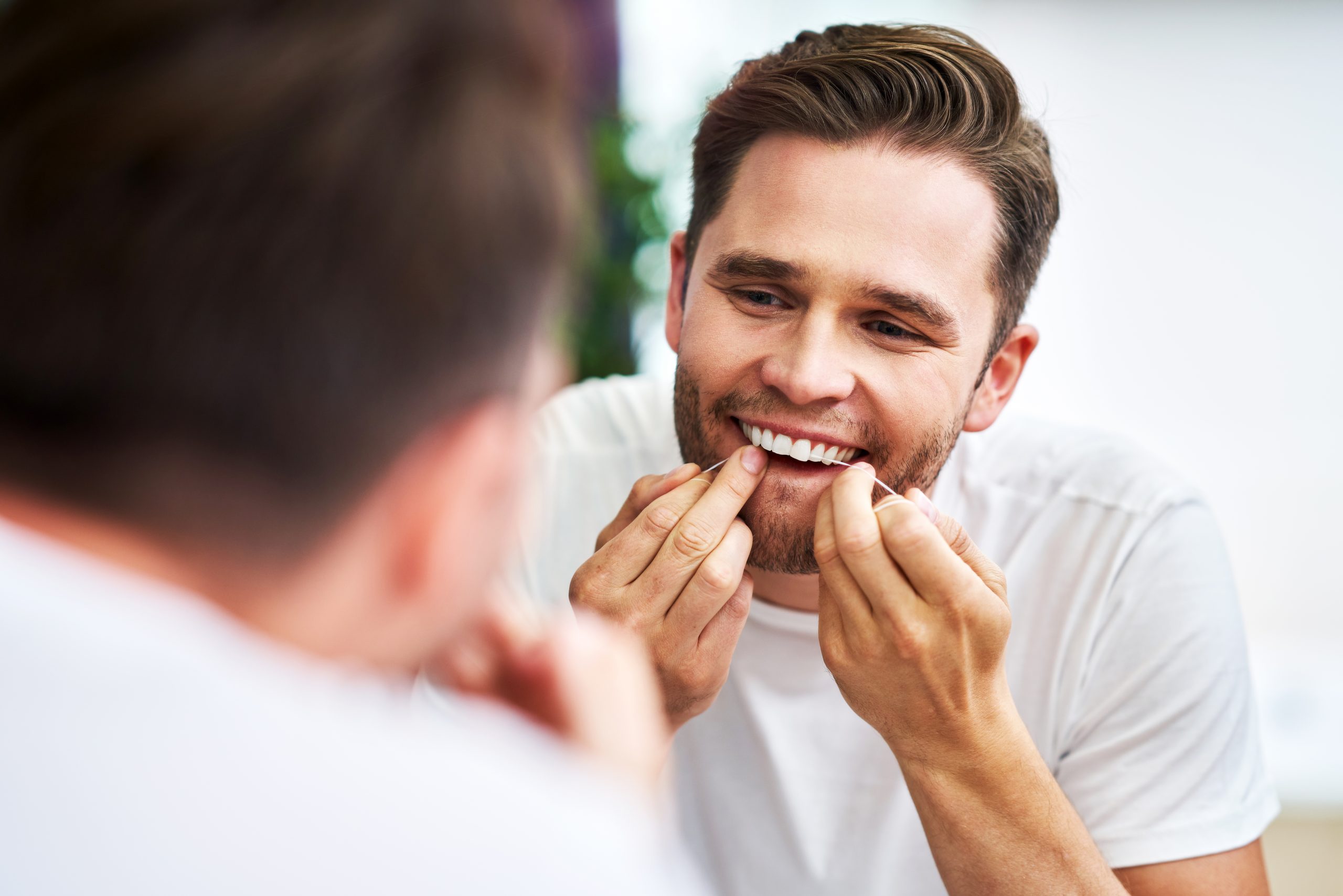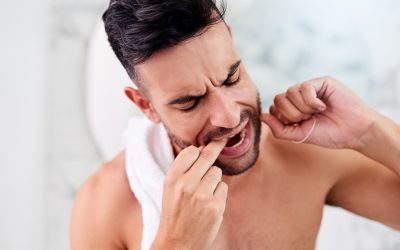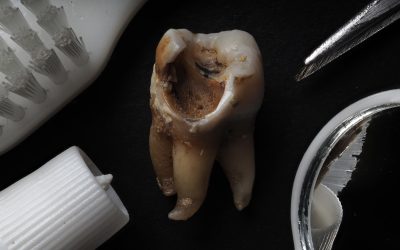Brushing your teeth alone won’t get rid of all the food particles, plaque, and tartar in your mouth. When toothbrushes can’t reach food particles and plaque stuck in between teeth, that’s where flossing comes in handy! It should be part of your daily dental hygiene routine.
Below, we’ve answered the most pressing questions about flossing and provided some quick flossing advice.
1) How Many Times A Day Should You Floss?
Research suggests that you should floss your teeth at least once a day, at any time of day [1].
1) How Do You Floss Properly?
The frequency of flossing may not mean much if you don’t know how to floss properly. You should consult your dentist for a practical in-person lesson on flossing seeing as it can be a daunting task trying to explain a good flossing technique over text. Your dentist or other dental professionals, like a dental hygienist, are best placed to give you a practical lesson.
For instance, we do a lot of hands-on oral hygiene instruction at the Little Green Building, which includes flossing. We can sit down and spend time coaching you on how to floss and properly brush among other things.
Proper Flossing Techniques
However, here is a quick note on proper techniques with some easy steps you can follow, including how many times you should floss in between adjacent teeth:
Step 1: Properly Holding Dental Floss
Assuming you are flossing with traditional dental floss (a thin string-like material), you need to cut a piece of floss and wind it around the index or pointing finger (of one or both hands) leaving a 3–4-inch gap.

Asian Women In Satin Robes Cleaning Her Teeth Against Gray Background, Woman Flossing Teeth With Dental Floss, Oral Hygiene And Health Care
Step 2: Guide the Floss
The second step is guiding your floss in between your teeth aided by the thumb or middle fingers. The flossing process should be gentle. Relax your lips and cheeks to get easier access to your mouth.
Step 3: Floss
Once you guide the floss in between teeth, simply floss by making a side-to-side “saw-like” motion, as well as up and down. This should be done gently to avoid hurting gum tissue in between the teeth. Ensure you reach the topmost point of the teeth. It also helps to make a “C” curve with the floss around each tooth to catch all the food particles.
Keeping your fingers closer together will offer you more control when flossing. When frayed or brownish, get a new floss and repeat until you have flossed in between all teeth, including hard-to-reach areas like in between the last molars. Clean spaces should make a satisfying “squeak” sound.
Keep in mind: There’s no specified number of times you should floss in between each tooth. Simply look out for the squeaking sound. Clean floss (after use) should also be an indication that you’ve flossed properly.
2) Should You Brush First or Floss First?
Generally, there’s no preference on the ideal time to floss i.e., it can be at night before bed or during the day, after or before brushing.
While some people may prefer flossing before brushing (to loosen food particles and other debris in between teeth before brushing them away), you can brush before or after flossing, provided you floss at least once daily.
3) What Happens If You Don’t Floss?
If you don’t floss at all or properly, food particles, plaque, and other debris will build up on your gum line. If this happens over a prolonged period, you risk getting dental conditions like tooth decay and chronic health conditions like gingivitis (a type of periodontal disease or gum disease that makes the gums swell and become tender).
4) Why Do I Have Sore Gums After Flossing?
Over flossing (flossing too often) or flossing too aggressively can make your gums sore. As mentioned, you should be gentle and avoid hitting your gums when guiding floss between teeth.
You should also avoid rushing as this increases the risk of pushing floss too hard and hitting the gums. If you floss properly, you won’t hurt yourself or experience effects like sore gums.
5) Why Do I Have Gums Inflamed After Flossing?
If you don’t floss as often as you should (at least once daily), your gums can be inflamed due to plaque buildup on the gumline. Over flossing can also hurt the gums and cause inflammation.
6) How Many Times Should I Floss if I Have Braces?
Braces tend to increase the amount of food particles stuck in between teeth. They also make it harder to floss. As a result, the flossing frequency should be higher than if you didn’t have braces i.e., at least twice a day to prevent tartar and plaque buildup as well as ensure you remove all food particles clogged in the braces and in-between teeth.
It is recommendable to use certain types of dental floss i.e., waxed floss that doesn’t get caught on braces easily. Floss threader may help reach beneath wires. Interdental flossing brushes can help in effectively cleaning out plaque and other debris caught on wires and brackets, eliminating the need for over flossing.
7) Does the Type of Floss Dictate the Frequency of Flossing?
Ideally, you should floss your teeth at least once daily, regardless of the type of floss you are using. However, it is worth noting that some types of floss do a better job than others, such as waxed floss being better than unwaxed floss if you have braces.
Super floss is also better than traditional floss since it is specifically made for people with orthodontic braces and bridges. It also works great for someone with wide gaps between teeth. Floss picks or dental picks can help when flossing on the go.
On the other hand, air flossers and powered water flossers use air pressure and water pressure, respectively, to push out debris stuck in between teeth. These options may be better than traditional floss depending on the type of teeth, braces, or personal preferences. Ideally, good floss will remove stuck debris on the first or second try.
Book a Dental Flossing Appointment with an Experienced Dentist in Toronto
If you’re looking for more oral hygiene advice, dental services, and other types of consultations, you can click here to book a family dentist appointment at the Little Green Building or call 416-769-8135 to get in touch with us. We can provide you with dental hygiene instructions to ensure your teeth are always as healthy as possible. You can also visit 265 Jane Street or email littlegreenbuilding@gmail.com.
Dr. Paltsev and his team are always ready to provide in-depth instructions on dental hygiene, have a wide array of dental health services including professional cleaning, and more!
Sources
1) https://www.healthline.com/health/dental-and-oral-health/how-often-should-you-floss





